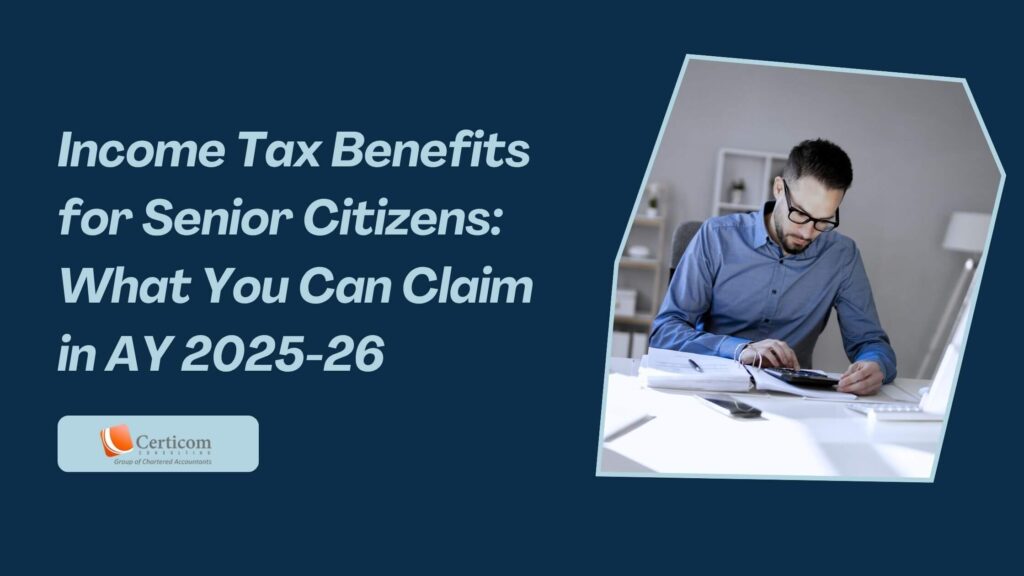New TDS Rules Under Section 194T: Impact on Partnerships and LLPs

Introduction to Section 194T
The Finance (No. 2) Bill, 2024, introduces Section 194T of the Income Tax Act, effective April 1, 2025. This new provision mandates that Partnership Firms and LLPs deduct TDS on specific payments made to their partners, including remuneration, interest on capital, and other disbursements.
Previously, these payments were exempt from TDS, as they were considered part of profit-sharing. However, with Section 194T, the government aims to improve tax compliance, transparency, and timely tax collection. TDS will be deducted when the amount is either credited to the partner’s account or disbursed, whichever occurs first.
The TDS rate and exemption threshold will be notified separately. This change aligns partner taxation with other income categories subject to TDS, helping reduce tax evasion and strengthening the tax administration system.
Applicability and Scope of Section 194T
Who is Affected?
Section 194T applies to Partnership Firms and LLPs making payments to partners under the following categories:
Salary
Remuneration
Commission
Bonus
Interest on Capital

When is TDS Deducted?
TDS will be deducted at the earlier of the following events:
When the amount is credited to the partner’s account (including capital account)
When the payment is physically made to the partner
This ensures tax parity between partners and salaried employees, as salaries are already subject to TDS under Section 192. The inclusion of partner payments under the TDS framework strengthens structured taxation and reduces tax avoidance.
Threshold and TDS Rate
Threshold Limit: TDS under Section 194T applies only if total payments exceed ₹20,000 in a financial year.
TDS Rate: If the threshold is breached, TDS at 10% will be deducted on the entire amount exceeding ₹20,000.
No Exemption Forms: Unlike other TDS provisions, partners cannot submit Form 15G or 15H to seek exemption, ensuring uniform taxation.
Comparison: Old vs. New Taxation Framework
| Aspect | Old System (Before Section 194T) | New System (After Section 194T) |
|---|---|---|
| TDS Applicability | No TDS on partner remuneration | TDS applies if payments exceed ₹20,000 |
| Nature of Payment | Considered part of firm’s profits | Considered taxable income subject to TDS |
| Timing of Tax Payment | Paid at the time of filing ITR | Deducted at the time of credit/payment |
| Cash Flow Impact | No immediate tax deduction | Immediate tax deduction reduces cash inflow |
| Tax Refund Possibility | Not applicable | Partners may need to claim TDS refunds |
This change results in immediate tax deductions, reducing partners’ take-home payouts but ensuring timely tax collection.
Understanding the TDS Process: Step-by-Step
Partnership Firm makes payment to Partner
Check if total payments exceed ₹20,000 in a financial year
If YES → Deduct TDS at 10% → Deposit TDS & File TDS Return → Partner Receives Net Payment → Partner Claims TDS Credit While Filing ITR
If NO → No TDS Deduction
Advantages of Section 194T
✅ Improved Tax Compliance: Ensures tax is collected upfront rather than relying on partners to declare their income at the time of filing ITR.
✅ Greater Transparency: Deductions are recorded in Form 26AS, facilitating tax tracking.
✅ Reduction in Tax Evasion: Eliminates the possibility of partners deferring tax payments.
✅ Better Financial Planning: Distributes tax burden throughout the year, avoiding large lump-sum tax payments.
Challenges for Firms and Partners
🔸 Increased Compliance Burden: Firms must obtain a TAN (Tax Deduction and Collection Account Number) and comply with regular TDS filings.
🔸 Administrative Challenges: Small firms without dedicated tax professionals may struggle with compliance.
🔸 Cash Flow Impact on Partners: Partners will receive lower payouts due to immediate TDS deductions.
Best Practices for Smooth Implementation
For Firms:
✔ Obtain TAN and ensure timely TDS deposits. ✔ Implement a structured TDS deduction and deposit system to avoid penalties. ✔ Hire a tax consultant to manage TDS compliance efficiently.

For Partners:
✔ Adjust financial planning to accommodate lower take-home income due to TDS. ✔ Maintain records of TDS deductions for easy refund claims if necessary.
For the Government:
✔ Consider simplified compliance for small firms. ✔ Allow TDS exemption for partners with lower total incomes, similar to salaried individuals.
The introduction of Section 194T represents a major shift in partner taxation by bringing partner payments under the TDS mechanism. While this enhances tax compliance and transparency, it also increases the compliance burden for firms and affects partner cash flows.
By adopting proactive tax planning and compliance strategies, firms and partners can effectively navigate these new tax requirements, ensuring a smooth transition to the updated system.
Related Post
Income Tax Benefits for Senior Citizens: What You Can Claim in AY 2025-26
Claiming Input Tax Credit (ITC) under GST: Essential Documents and Compliance Checklist
Book A One To One Consultation Now For FREE
How can we help? *




